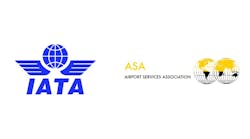There has been — and will be — considerable energy expended on the challenge of finding and retaining the next generation of aviation professionals.
An International Civil Aviation Organization’s (ICAO) initiative was launched in 2009 “to ensure enough qualified and competent” individuals are available to support the needs of the global airspace. In the nine years since “NGAP’s” founding, the fervor surrounding workforce development in aviation has grown to a fever pitch.
The competition for new talent goes far beyond aviation. Maintenance providers are jockeying for attention among every other industry that depends on technically competent individuals. To keep up with the automotive, trucking, heavy machinery, manufacturing and countless other sectors, aviation needs to critically address the way its industry is viewed from “outside.”
Beyond business needs and schedule demands, more than technical skills and career aspirations — the future workforce depends on how we market our profession.
The U.S. FAA’s version of a technician’s career is in AC 65-30A. This “Overview of the Aviation Maintenance Profession” was prepared for “prospective airframe and powerplant mechanics” (though it provides information about both repairmen and noncertificated technicians also).
As expressed through the AC — a strange marketing or recruitment tool — the American government focuses heavily on the duty and responsibility to uphold safety standards in a “dynamic career field.” Describing the often-difficult working conditions facing aviation mechanics and technicians, the FAA reminds aspiring workers that: “[A] mechanic or a technician must never sacrifice the high standards of workmanship and public trust just to meet a schedule.”
In 2014, the FAA opened a new draft of the AC for comment. ARSA and the Aviation Technician Education Council coordinated with 11 other industry organizations to develop and submit a complete rewrite of the document. The group’s submission focused on the regulatory and business environment in which all technicians work and laid out a roadmap to both certificated and noncertificated employment as well as a complete list of available resources related to the profession. (To learn more about the AC, visit arsa.org/ac-65-30, then contact ARSA to share ways to spread the story).
Agency guidance – which still has yet to be officially updated – might be useful to defining the parameters of the industry. Unfortunately, it’s not really a tool for communicating it.
Looking outside the United States, the Australian Civil Aviation Authority’s (CASA) “Engineer Careers Guide” takes a more narrative approach. Interspersed among 10 career profiles of current industry professionals (many of them “LAMEs,” a term explained by the document that is just one amusing example of how the industry’s language can seem befuddling to the “outside”), the guide describes the purpose and value of aircraft engineers by challenging the typical person’s limited knowledge of the aviation workforce. “If you thought flying was only about pilots, think again. No aircraft takes to the skies anywhere without being checked and signed off by an engineer.”
Neither of the government documents tell the real story: You can’t fly without us. In building its future, the maintenance world needs to market the “right now,” which is pretty impressive. While responsibility and commitment to excellence are defining characteristics of any satisfying career, the chance to work with new technologies, see the world, and do something that matters is certainly more attractive when looking from the outside in.
Brett Levanto is vice president of operations of Obadal, Filler, MacLeod & Klein, P.L.C. managing firm and client communications in conjunction with regulatory and legislative policy initiatives. He provides strategic and logistical support for the Aeronautical Repair Station Association.



